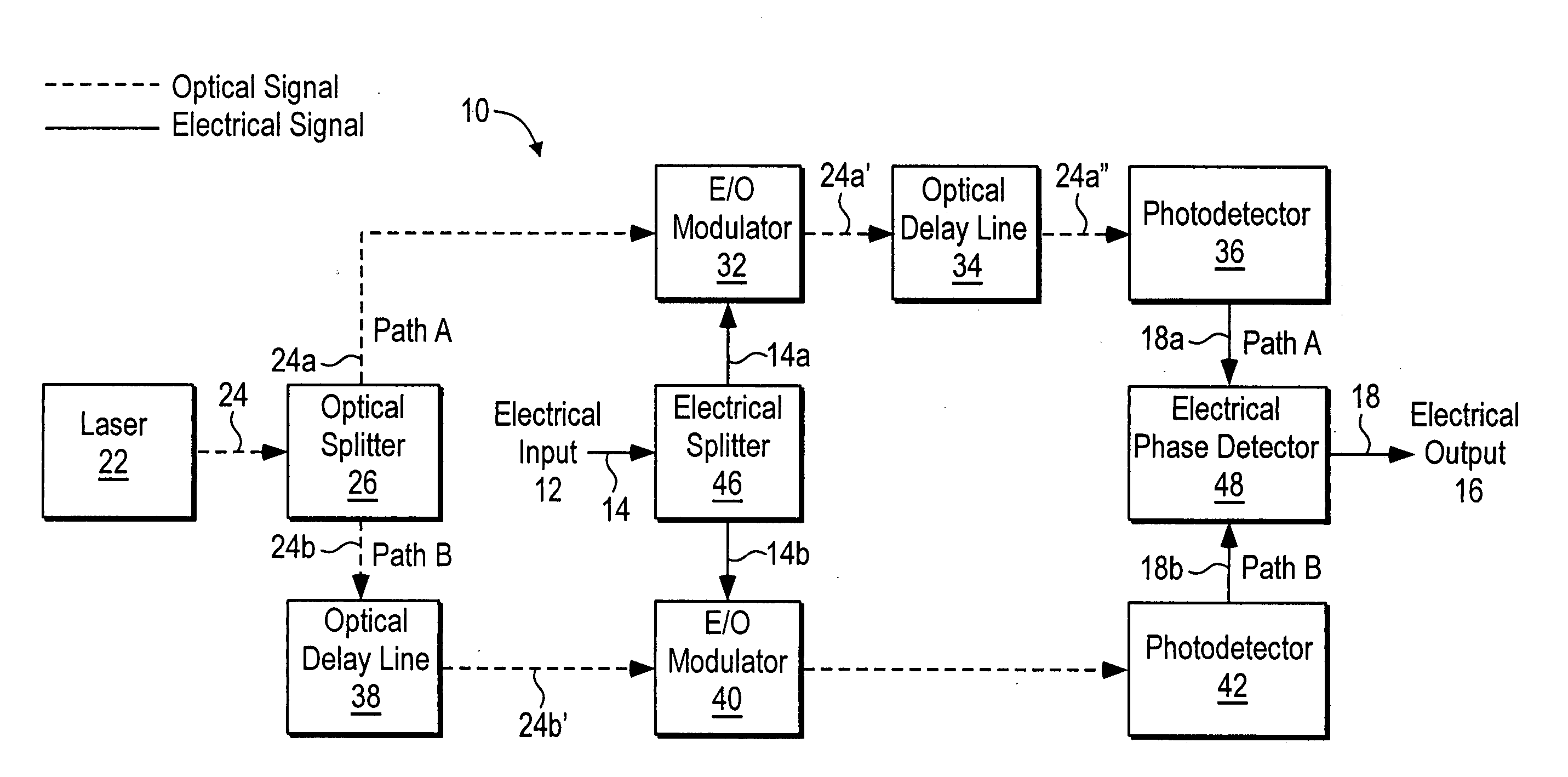Electro-optic delay line frequency discriminator
a delay line and frequency discriminator technology, applied in the field of electro-optic delay line frequency discriminators, can solve the problems of laser noise degrading the signal-to-noise ratio at the output of the discriminator, the output of a laser exhibits relative intensity noise (rin), and the noise of lasers, so as to reduce noise
- Summary
- Abstract
- Description
- Claims
- Application Information
AI Technical Summary
Benefits of technology
Problems solved by technology
Method used
Image
Examples
Embodiment Construction
[0017] Embodiments in accordance with the invention provide an electro-optic delay line discriminator, and a method for reducing noise in an electro-optic delay line discriminator.
[0018]FIG. 1 is a block diagram that schematically illustrates an electro-optic delay line discriminator according to an embodiment of the invention. The electro-optic delay line discriminator is generally designated by reference number 10, and has electrical input 12 for inputting electrical signal 14 into the discriminator, and electrical output 16 for outputting electrical signal 18 from the discriminator. Electro-optic delay line discriminator 10 also has laser optical signal source 22 to provide optical signal 24 in the discriminator (in FIG. 1, electrical signals traveling through electro-optic delay line discriminator 10 are represented by solid lines, and optical signals traveling through the discriminator are represented by dashed lines).
[0019] Optical signal 24 is split into two optical signals...
PUM
 Login to View More
Login to View More Abstract
Description
Claims
Application Information
 Login to View More
Login to View More - R&D
- Intellectual Property
- Life Sciences
- Materials
- Tech Scout
- Unparalleled Data Quality
- Higher Quality Content
- 60% Fewer Hallucinations
Browse by: Latest US Patents, China's latest patents, Technical Efficacy Thesaurus, Application Domain, Technology Topic, Popular Technical Reports.
© 2025 PatSnap. All rights reserved.Legal|Privacy policy|Modern Slavery Act Transparency Statement|Sitemap|About US| Contact US: help@patsnap.com



